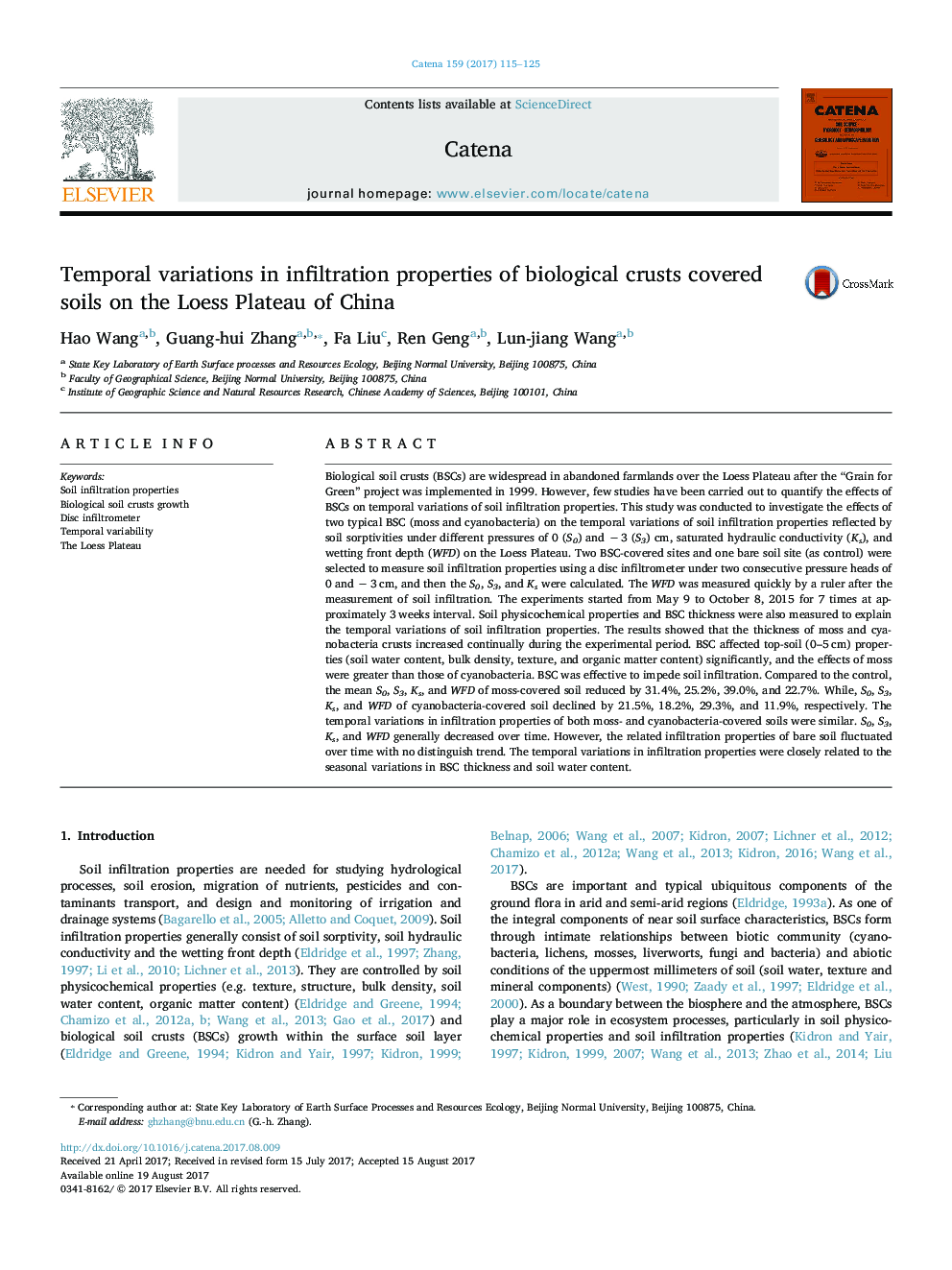| کد مقاله | کد نشریه | سال انتشار | مقاله انگلیسی | نسخه تمام متن |
|---|---|---|---|---|
| 5770071 | 1629195 | 2017 | 11 صفحه PDF | دانلود رایگان |
- BSC affected soil properties significantly on the Loess Plateau.
- BSC was effective to impede soil infiltration on the Loess Plateau.
- Soil infiltration properties generally decreased during a growth period.
- Soil infiltration properties affected by BSC thickness and soil water content.
Biological soil crusts (BSCs) are widespread in abandoned farmlands over the Loess Plateau after the “Grain for Green” project was implemented in 1999. However, few studies have been carried out to quantify the effects of BSCs on temporal variations of soil infiltration properties. This study was conducted to investigate the effects of two typical BSC (moss and cyanobacteria) on the temporal variations of soil infiltration properties reflected by soil sorptivities under different pressures of 0 (S0) and â 3 (S3) cm, saturated hydraulic conductivity (Ks), and wetting front depth (WFD) on the Loess Plateau. Two BSC-covered sites and one bare soil site (as control) were selected to measure soil infiltration properties using a disc infiltrometer under two consecutive pressure heads of 0 and â 3 cm, and then the S0, S3, and Ks were calculated. The WFD was measured quickly by a ruler after the measurement of soil infiltration. The experiments started from May 9 to October 8, 2015 for 7 times at approximately 3 weeks interval. Soil physicochemical properties and BSC thickness were also measured to explain the temporal variations of soil infiltration properties. The results showed that the thickness of moss and cyanobacteria crusts increased continually during the experimental period. BSC affected top-soil (0-5 cm) properties (soil water content, bulk density, texture, and organic matter content) significantly, and the effects of moss were greater than those of cyanobacteria. BSC was effective to impede soil infiltration. Compared to the control, the mean S0, S3, Ks, and WFD of moss-covered soil reduced by 31.4%, 25.2%, 39.0%, and 22.7%. While, S0, S3, Ks, and WFD of cyanobacteria-covered soil declined by 21.5%, 18.2%, 29.3%, and 11.9%, respectively. The temporal variations in infiltration properties of both moss- and cyanobacteria-covered soils were similar. S0, S3, Ks, and WFD generally decreased over time. However, the related infiltration properties of bare soil fluctuated over time with no distinguish trend. The temporal variations in infiltration properties were closely related to the seasonal variations in BSC thickness and soil water content.
Journal: CATENA - Volume 159, December 2017, Pages 115-125
